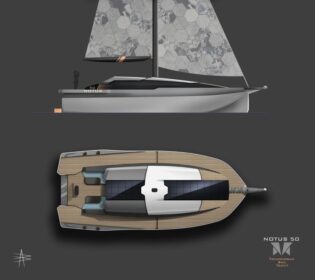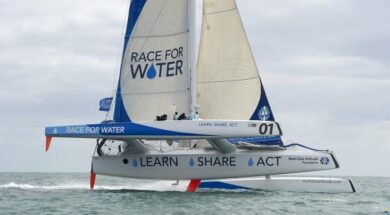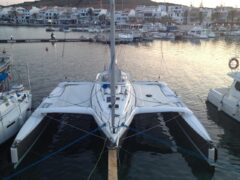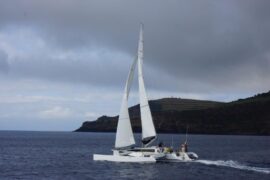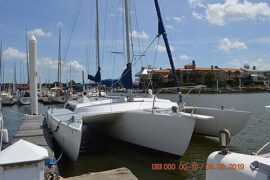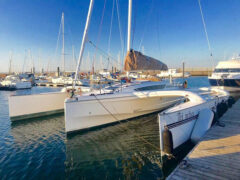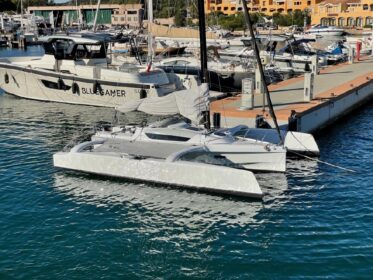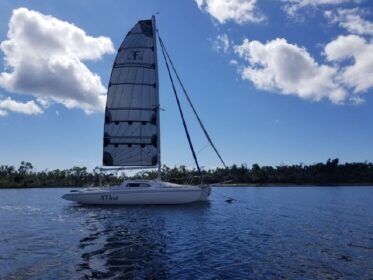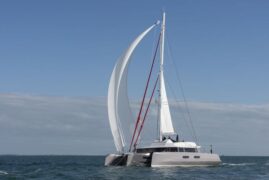About Trimarans
Recall that the “cathedrals” developed in 1958 by the American Richard Cole (this is how trimarans are often called abroad, seeing the similarity of the cross-section of their hulls with the outlines of Gothic cathedrals) turned out to be such a promising and successful version of the contours that the designers by now have practically abandoned the classical forms of Hickman’s one-ton “sea sleigh”. Now trimarans are increasingly preferred over conventional planing hulls (let’s call them traditional).
Often high-speed trimarans are called two-tunnel ships. Obviously, they proceed from the point of view that the main thing is the tunnels themselves, which serve as a kind of traps for the oncoming air flow, which forms a water-air emulsion under the bottom, thereby reducing frictional resistance and increasing speed. However, professional boat builders are now less inclined to take seriously and support this point of view. Studies have shown that air bubbles passing under the arches of the tunnels do not at all serve as an air lubricant that improves the “sliding” of the bottom, but rather gives the opposite effect. That is why it is increasingly difficult to find these tunnels on trimarans of recent years.
Sponsons give the trimaran an advantage over a traditional hull.
In addition to increased stability in the parking lot (static stability), trimarans are also distinguished by greater stability on the move, especially if the outer sides of the sponsons are sloped. When heeling at high speed, hydrodynamic forces are added to the static restoring force, which arise on the outer inclined edge of the sponson entering the water, as on a conventional planing plate located at a certain angle of attack (due to the running trim). It is clear that the smaller the roll when turning, the smaller the lateral drift of the boat, i.e., slippage, drift in the direction opposite to the turn; the tighter the turn, or, as shipbuilders say, the smaller the radius of circulation.
When sailing in waves, another important quality of the trimaran is also manifested – a good, uniform “longitudinal balance” of the hull (this is how the distribution of the width and area of the waterline, as well as the deadrise of the bottom along the length of the boat can be conditionally called).

